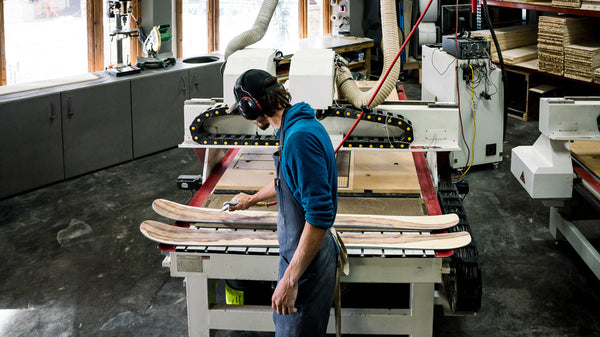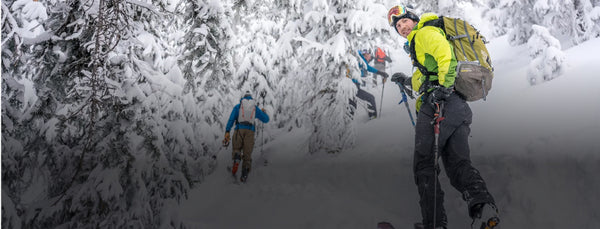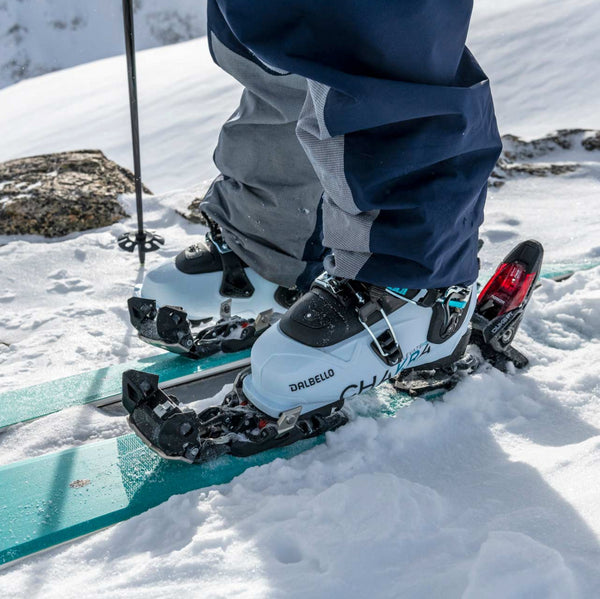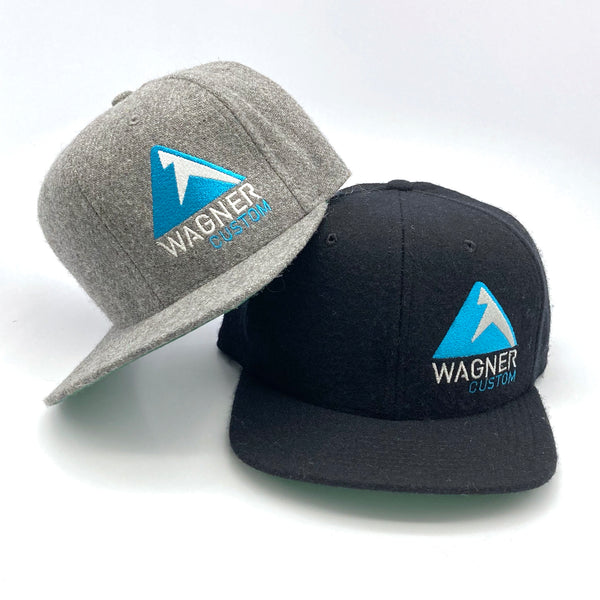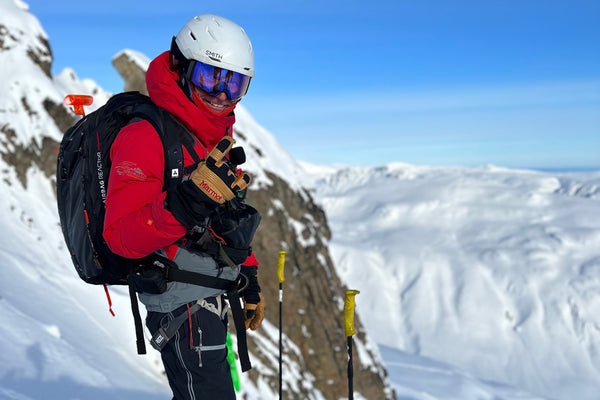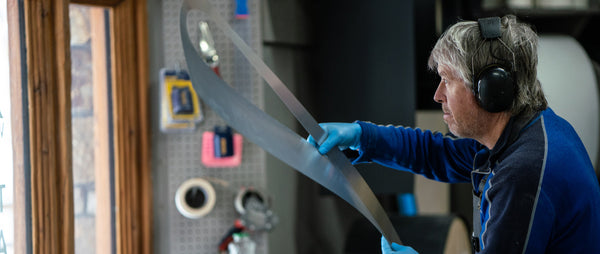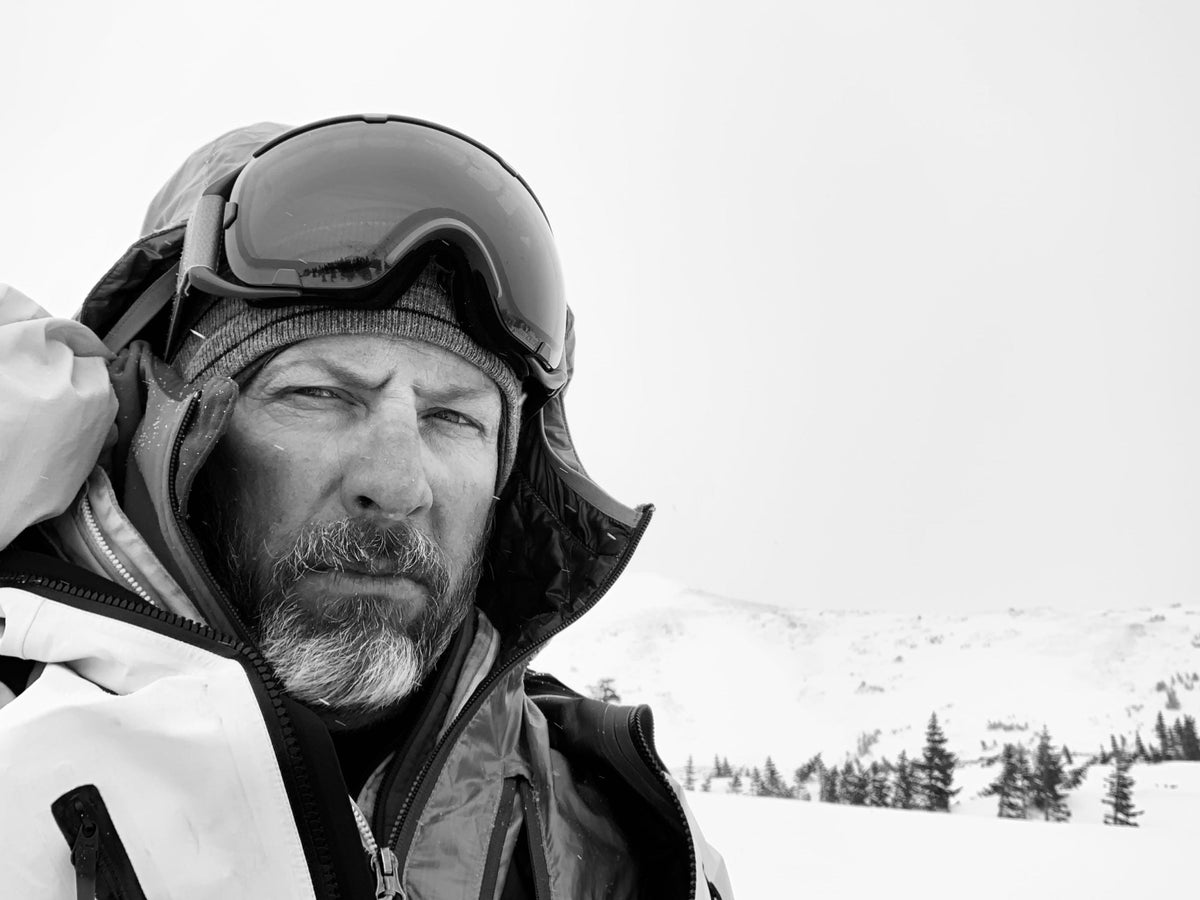
Level Up: Jake Hutchinson
On our Next Level podcast, the inimitable Jason Blevins interviews some of the biggest names in skidom. In October 2018, he interviewed Jake Hutchinson, the then- lead trainer of Salt Lake City’s Gym Jones who created Wagner’s Six-Week Ski Prep program.
(Check out his 6-Week Ski Prep program here, and the bodyweight version here.)

Jake Hutchinson is now the Technical and Curriculum Director for the American Avalanche Institute, where he has worked for 25 years.
Hutchinson is, for lack of better words, a certified badass. He is the son of a ski patroller, a battle-tested Marine, and a veteran avalanche safety and survival skills and instructor who trains search and rescue teams, ski patrollers, and Special Forces soldiers. Currently the Technical and Curriculum Director for the American Avalanche Institute, he’s also Wagner’s resident ski fitness guru. Jake has been getting us in shape and keeping us injury-free for years.
Blevins caught up with Hutchinson a few years back to talk about injury-proofing your body, the importance of self-assessment, and how the mountain can separate the wheat from the chaff. Here’s what he had to say (check out our Next Level podcast to listen to the full episode here).
Blevins: If anyone out there can help us hone our strength, power, balance, and endurance, it’s you. Say we have six months to train for skiing. What do we need to do?
Hutchinson: I approach this in a few ways, whether you’re going to Alaska to ski big faces or looking to ski two more runs at the ski resort. The first thing I look at is injury-proofing, because we get injured when we’re tired, and I really try to balance everything out. People think of skiing as a quad-dominant sport because that’s the muscle that gets tired, and really it should be a balance between quads, hamstrings and glutes. When people start overusing their quads because their hamstrings and glutes are imbalanced, that’s when they get injured.
Photos © Lisa Boshard used with permission
So I start with a lot of posterior chain work, getting people’s butts and hamstrings strong and mobile, making sure they can actually move through all the positions in skiing. We do a lot of single-leg work. People like to do a lot of wall sits and squats, but the reality is that your legs rarely work in unison when you’re skiing. You’re always using them independently, so we need to strengthen them independently. I also do a lot of explosive work. Skiing is an explosive sport.
Once I feel like we have a good balance to prevent injuries, then I start working on lactic acid threshold. What stops you from skiing 3,000 vert feet on a perfect powder run is your legs blowing up. They just can’t handle the lactic acid burn. We do light weight and lots of reps, like 25-30 goblin squats and hold it for 30 seconds. We build up the body’s tolerance to maintain strength during those periods when lactic acid is telling you to quit. It could make the difference between finishing your run in style or in the backseat, when you’re endangering your knees and everything else.

Jake at Gym Jones.
Blevins: Talk to me more about how being tired leads to injury.
Hutchinson: In my 21 years of ski patrolling, I can’t tell you how many people blew a knee at the end of the day because they took one or two more runs. A lot of those falls came down to not being fit enough in a strength-endurance sense to maintain form. Skiing has a reasonable risk factor even on a corduroy groomer beginner trail. When we get tired, our form starts to suffer. The ACL is a delicate connecting fiber in our body that takes a ton of grief. I’d say 50% or more of knee injuries were just from people being tired.
Blevins: I remember someone telling me to know how to fall right. Can that help people avoid knee injury, too?
Hutchinson: I can’t tell you how many people, myself included, caused an ACL or other knee injury because they try to hang on to a bad turn rather than go down on a hip and take the little shame from a fall. Fighting falls is another primary way to get yourself hurt, because you end up in positions that are compromised. The best thing to do is go down on a hip. Most ACL injuries happen at thresholds well below a properly releasing binding. Your binding should be a backup for a backup, not the primary savior for your knees.

Blevins: How about balance? We see those pictures of U.S. Ski Team athletes standing on a fit ball. Do you do a lot of balance work?
Hutchinson: Balance and core stabilization are really important. Most balance comes from your core. Most people think about abs, but it’s really your low back, mid back, everything that stabilizes. My old coach said you have to make that core a stone to stabilize you. We do single leg stuff with weights but also things like holding planks and hanging on a bar and doing knees to elbows. One of our claims to fame is adherence to a strict form to make sure people are engaging their core properly through every movement. If you have a weak core, it doesn’t matter how strong anything else is. It’s like having a massive tree with a skinny trunk—it’s not going to be able to hold the branches up.
Blevins: How about endurance? Do you encourage running and bike riding? I like to cross train more than I like to get in the gym, so I’m a big mountain biker. Yet when ski season starts, I don’t feel very ready. That alone doesn’t seem to work.
Hutchinson: What you’ve run into is an efficiency of movement. You mountain bike so much that you move very efficiently. You might go out for a three-hour ride, but the time your heart rate is in the zone where you’re going to increase your endurance threshold is probably very short. You have to get up in the 65 to 75 percent heart rate for a sustained amount of time. I’m a big mountain biker as well. I hate running with a passion, but I force myself to trail run a couple days a week. I think trail running is really good for skiers because your footing is always changing, which leads your body to start stabilizing.
Photos © Lisa Boshard used with permission
There are two things that underlie any fitness or strength program: You have to have a decent amount of endurance, because the endurance is what carries you through when everything breaks down and gets tired. You also have to have a good amount of underlying strength for that stabilization. That doesn’t mean you have to be able to back-squat a house, but for skiing, you should be able to consistently move your body weight through full body movements, like dead lifts and back-squats, because that’s the load you’re putting on your body.
Another great way is interval training. We like to use the rowers and fan bikes to do 30 seconds of work and 90 seconds of rest, with your work at a threshold far exceeding what you can sustain for very long. If you do that for 15 or 20 rounds, the cardiovascular benefit is close to being at a sustained rate for the entire time. Think about how hard you can go for 30 seconds, and there’s no way you can maintain that intensity on your mountain bike for three hours. You might get bigger benefit through that shorter duration and higher intensity interval versus that long mountain bike ride.
None of us are training to be gym rats, so I’m a huge proponent of cross training and doing other things.

Blevins: What about eye-hand coordination and intuitive quick decisions? I feel like that helps my skiing a little bit.
Hutchinson: I’ll confess I’m an avid motorcycle and dirt bike rider. There’s nothing that I feel is more like skiing than fast on my dirt bike standing up on my pegs. I’m looking ahead at my turns, weighting the pegs to turn, for me it’s the same kind of flow as skiing.
Blevins: Have you ever run across an exercise or an approach that wasn’t good for skiing?
Hutchinson: A few things I would stay away from, like machines in gyms. I’m really a proponent of free weights. Machines confine you to their range of motion and alter your body mechanics. The other thing is leg extensions. There are very few ways you can put more strain on your knees than doing leg extensions. It also trains your quads in isolation, and our bodies don’t work in isolation. The hamstring and glute are just as important as the quad to stabilize.

Blevins: I feel my hips every time I skin. if someone wants to start skinning, and training to be a good skinner and kick-stepper, what would you recommend?
Hutchinson: Getting that hip hinge is really important. I don’t care if you have the fanciest ski boots on the planet, ski boots put your body in a bad position, and you need to have good hip mobility. I’ll start with your hip flexors. It comes down to your hips being too tight and not mobile enough. I do a couple yoga poses, like child’s pose, pigeon, and cobra pose. For me it goes into the psoas, one of the biggest muscles in your core. Once that tightens up, more skinning is self-defeating. You can also google hip mobility and hip openers, there are short progressions that are really good for that.
Blevins: Is there any tip you have for skiing that you think about all the time? For me, it was “shin to win.” I’m going on 25 years of telling myself that in my head. Anything for you a piece of advice that’s still important and still works?
Hutchinson: The shin one is good; I tell people that all the time, too. One thing that always stuck with me came from my dad, who was a ski patroller. My dad would always correct me anytime I’d drag my hands behind me. Especially when I get into steeper more consequential terrain, I still hear my dad saying I’m getting lazy and getting my hands behind my hips. And that pole plant points you in the direction where you’re going, and I want to see where I’m going, not where I am.
--
Intro by Kim Beekman, original interview by Jason Blevins for 'Next Level Skiing' podcast.
Kimberly Beekman is the former editor-in-chief of the late, great Skiing Magazine (RIP), and a longtime editor of SKI Magazine before that. She currently uses the title of “freelancer” as a beard to ski powder all over the world. She lives in Steamboat, Colorado, with her wonderful daughter and terrible cat.

